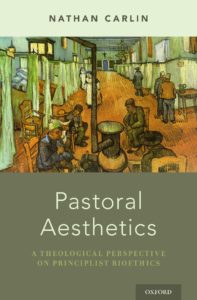by Nathan Carlin, Ph.D.
When I began reading in the history of bioethics, I was struck by the fact that many of the founders of bioethics had theological degrees, which led to a common way of articulating the origins of the field: “Bioethics began in theology, but quickly secularized.” There are debates about how this happened. Yet in recent years a renewed interest in religion and bioethics has emerged. The University of Chicago’s Program on Religion and Medicine is one such example.
Because I am a pastoral theologian, I also was struck by the fact that pastoral theologians have not contributed to bioethics in any meaningful way. Indeed, the theological contributions to bioethics have been made by theological ethicists and systematic theologians, not pastoral theologians. (I realize that the terms “systematic theology” and “pastoral theology” will be foreign to many readers of this blog. Suffice it to say that the key difference between systematic theology and pastoral theology is the emphasis placed on human experience. If, for example, systematic theologians tend to focus on how doctrines fit together, pastoral theologians, in contrast, study how a given doctrine affects the lived experience of persons and groups.) This lack of participation by pastoral theologians in bioethics seemed odd to me, given that chaplains (i.e., practitioners of pastoral theology) work in the clinical context of bioethics.
In response to this lack, I wrote Pastoral Aesthetics: A Theological Perspective on Principlist Bioethics. The central argument of the book is that pastoral theologians can offer inquiry in bioethics that is both, on the one hand, different from what theological ethicists and systematic theologians offer bioethics, and, on the other hand, congruent with, but also distinctive from, contemporary movements in bioethics and health professional education such as narrative medicine, patient-centered care, etc. Specifically, pastoral theologians can offer inquiry in bioethics that is theologically-informed, psychologically-sophisticated, therapeutically-oriented, and experientially-grounded.

To offer this particular form of inquiry, in Pastoral Aesthetics I position core principles in bioethics with classic images of pastoral care, which enables me to interpret the bioethics principles in a new way. For example, I view the bioethics principle of respect for autonomy in light of the pastoral image of the living human document. Traditionally understood, respect for autonomy in bioethics is essentially about how to ascertain and honor the choices people make or would make with regard to medical decisions, especially where there is ambiguity (e.g., when a patient is in a coma and it is unclear if he or she would want a given intervention). In pastoral theology, the living human document is both a metaphor for the theological claim that human experience is a source of God’s revelation and a call to study human experience with the same rigor as other sources of revelation, such as sacred texts (e.g., creeds and scriptures). By viewing respect for autonomy in light of the living human document, my suggestion is that a pastoral perspective on respect for autonomy shifts attention away from thinking about choice in healthcare to appreciating persons as individuals.
I realize all of this may sound a bit abstract. Let me be more concrete by offering an example from clinical practice to demonstrate the spirit of what I am advocating. In the book I discuss a case from Milton Erickson (1901-1980), a well-known American psychiatrist. Erickson was asked to help a woman in her 50s who had made several suicide attempts. Unannounced, he visited the woman at her home, where she lived with a maid. She was intrigued by the surprise visit, so she let him in. On the porch, Erickson noted that the woman was growing African violets. He also learned that her social life centered on church. Erickson concluded his visit by giving her a peculiar “prescription.” He said: “I want you to send your maid to the nursery to purchase many more pots and every strain of African violets they carry. Furthermore, whenever a child is born to a member of your congregation, I want you to give a pot of African violets to the parents at the baptism. And whenever a wedding is celebrated, I want you to give a pot of these flowers to the bride.” The woman lived for another twenty years. Commenting on this case in Living Stories: Pastoral Counseling in Congregational Context, pastoral theologian Donald Capps noted that Erickson observed in this woman two things that gave her meaning in life—gardening and religion—and Erickson linked the two for her in a creative way: “By connecting them,” Capps writes, Erickson “addressed her suicidal threats, which derived from her feeling that her life lacked any real purpose.”
On the basis of this discussion, I drew a contrast between mainstream bioethics and my approach, which, in this case, is congruent with Erickson. I noted that, on the one hand, principlist bioethics typically would focus on this woman’s lack of capacity (due to her suicidal ideation) and also whether involuntary hospitalization should be sought, which would require a temporary suspension of her autonomy. On the other hand, I suggested that a pastoral perspective on respect for autonomy shifts the focus to what are usually thought to be marginal details of a patient’s history: church attendance and gardening. Because Erickson studied this woman as a living human document—seeing her as an individual—he saved her life. My book was written with the intent of cultivating in caregivers (religious or secular) an aesthetic appreciation for encounters such as these.
Finally, if some feel that principlist bioethics has become thin, procedural, and stale, principlist bioethics can be richer than is often assumed, when put in conversation with pastoral theology. Pastoral Aesthetics offers a guide for what this conversation between two fields can look like. Opportunities for creativity abound!
Declarations
I receive royalties from Oxford University Press for Pastoral Aesthetics. The ideas presented in this blog are in the book.